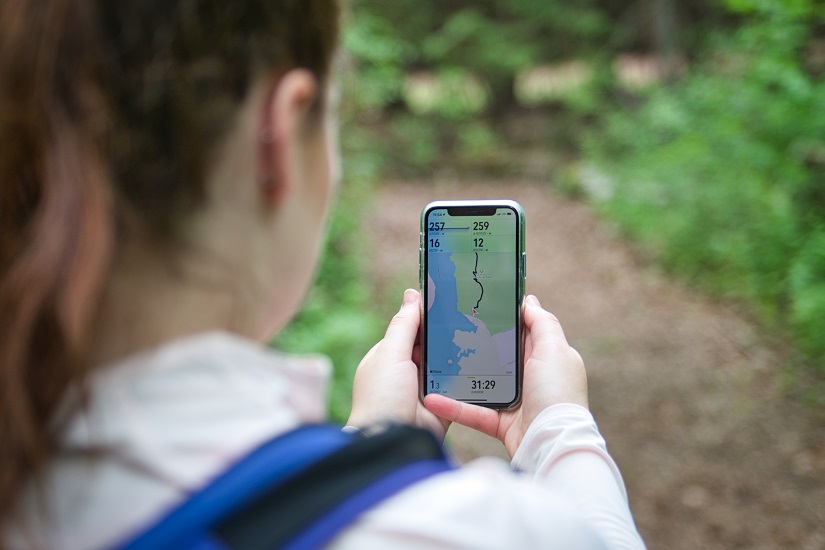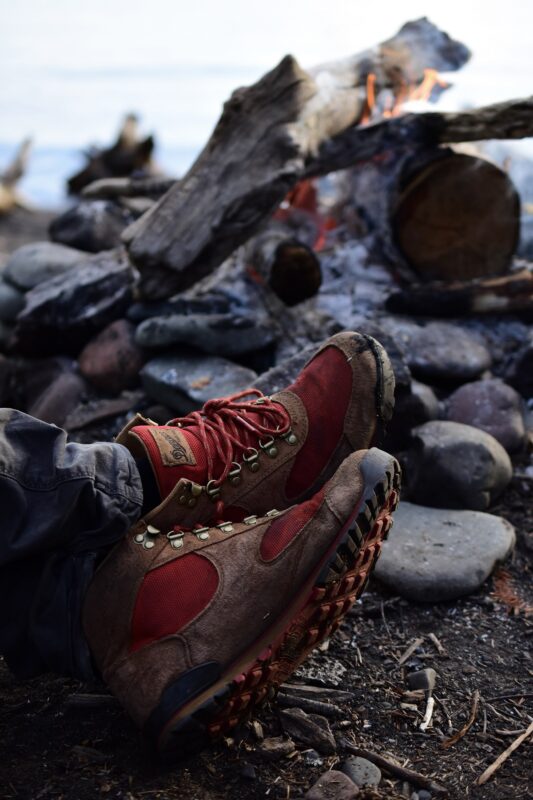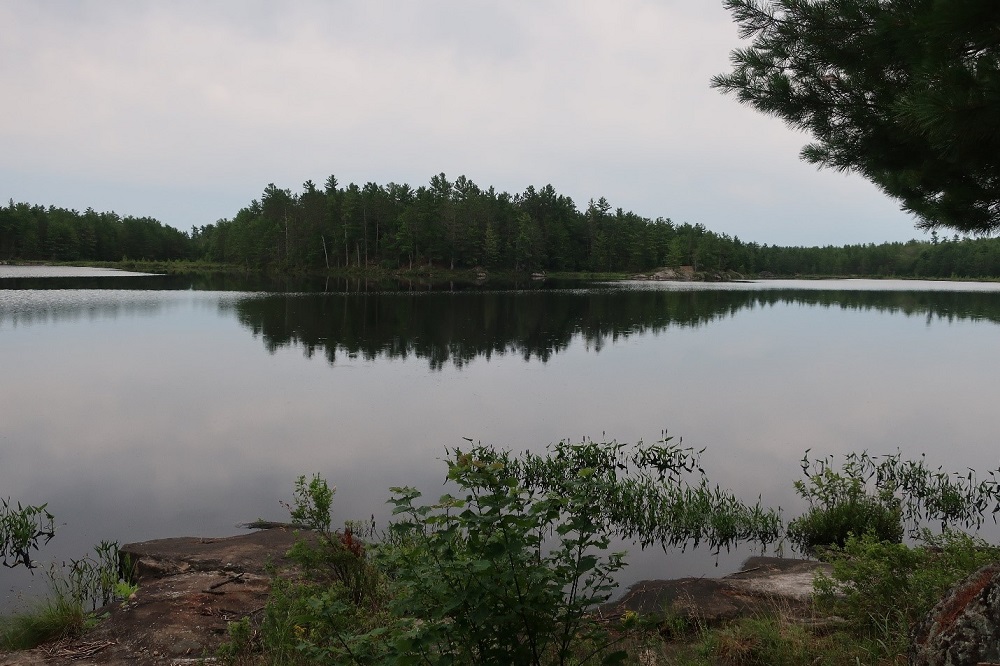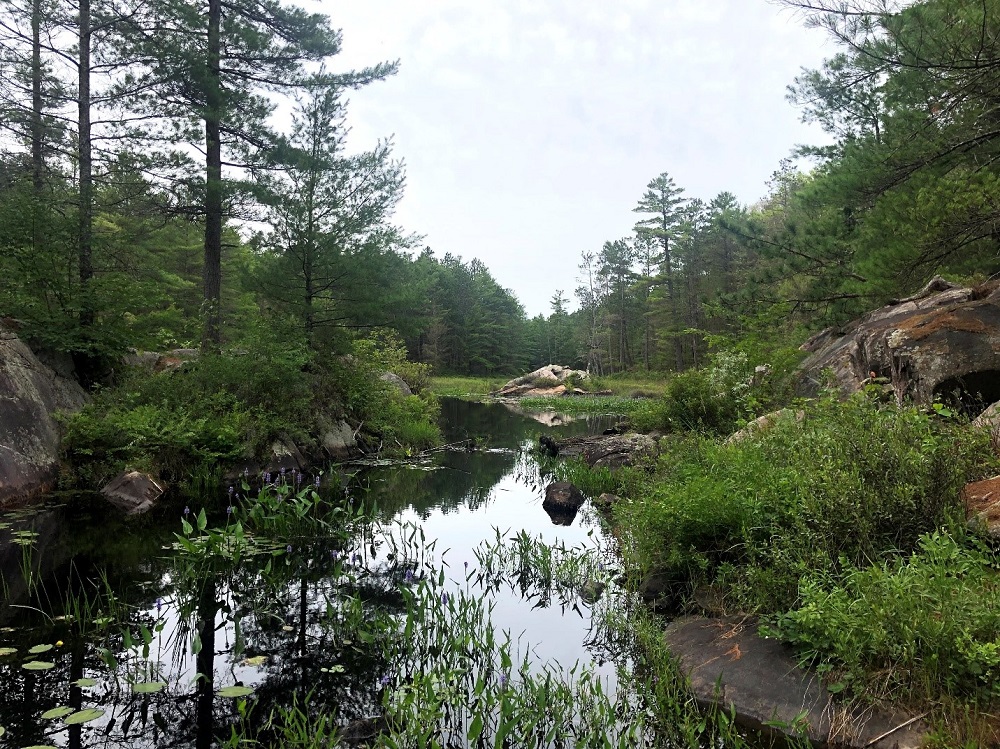In today’s post, Ontario Parks’ Assistant Program Coordinator Megan Birrell recounts her first hike-in backcountry adventure.
Last year, I tried backcountry camping by canoe for the first time. This summer, my camping crew and I decided to take it up a notch and try hike-in camping.
We selected Bon Echo Provincial Park’s Abes and Essens Trail as our hike-in destination and the planning began.
1. Beginner means beginner
The first lesson came when we picked our destination: even if you think you’re a good hiker and camper, it’s best to pick a beginner trail for your first backcountry outing.
Abes and Essens is considered an intermediate trail on the Ontario Parks’ overnight hiking website.
After hiking it, I can say that’s quite accurate.

While we all made it out and had a great time, this trail was a little bit over our skill level, and we should have tried an easier trail.
Don’t overestimate your skills when planning a hike or camping trip.
When in doubt, start on easy.
2. Pack light (and give in to the stink!)

This is a no-brainer for seasoned hikers, but you really do want to pack light!
When we went on our first backcountry expedition, we definitely overpacked.
This wasn’t as much of a problem when paddling…
…it’s a big problem for hike-in.
This time, I didn’t pack too much, and my back thanked me for it.
One place I had to learn to not overpack was clothing.
I was worried about smelling or wearing the same thing twice, but this time, I gave into the stink like many hikers before me.
Who cares if your clothes are a bit rank? We all smell!
3. Have backups for the essentials
Contrary to my last point about packing light, there are certain items you should bring backups for no matter the weight concern.
In our case, this was navigation. I downloaded our trail map for offline use on my phone, which was great for tracking how far we’d hiked (and when we could break), but that map didn’t have everything.

At the front gate, the staff provided us with a paper map for the trail, which highlighted things not included on my digital map (like where our site and privy were). A paper map is also key in case your phone dies.
Having these two forms of navigation working together helped us navigate the trail and make it to our site without having to double back too much.
4. Don’t let a blister get you down
I thought it would be a great idea to practice hiking with my full pack and new equipment two days before heading out.
While this is a good idea, it’s also a perfect opportunity to develop some pre-hike blisters.
 If you, like me, develop pre-hike blisters, make sure you do some preventative bandage work before you go on your trip.
If you, like me, develop pre-hike blisters, make sure you do some preventative bandage work before you go on your trip.
Even if you’re confident in your hiking boots, the heavier pack and new terrain can lead to blisters. Once you feel that familiar sting, make sure to cover your blister with a bandage or moleskin before it gets any worse.
I thought my blister couldn’t get any worse until it did. I pulled off my sock on a break to find a toonie-sized blister on my heel.
Long story short, I ended up wearing Crocs for day two of our hike, which is not great for safety or ankle support.
Don’t be like me.
5. Plan in downtime
If you’re a casual backpacker like me, you need your downtime. The only time you get to relax on a backcountry trip is when you’re not hiking.
Be sure to plan for that!

We hit the trail early to make time to set up and enjoy our site with the sunshine before having to leave the next morning.
This is always my favourite part of any trip, those moments around the fire when you can talk about the day’s hike and enjoy some much-needed calories.

We learned from our previous backcountry experience, and planned a second night on a car camping site to further decompress from our hike and relax in the luxury of the frontcountry.
It was a great way to transition out of the mindset of hike-in and back to everyday life. You also get to eat fresh foods and use an actual plate, a nice change after a backcountry trip.
Adding in this second night was perfect and prevented us from having to sit in a car for more than two hours after a day of hiking when all you want to do is relax.
